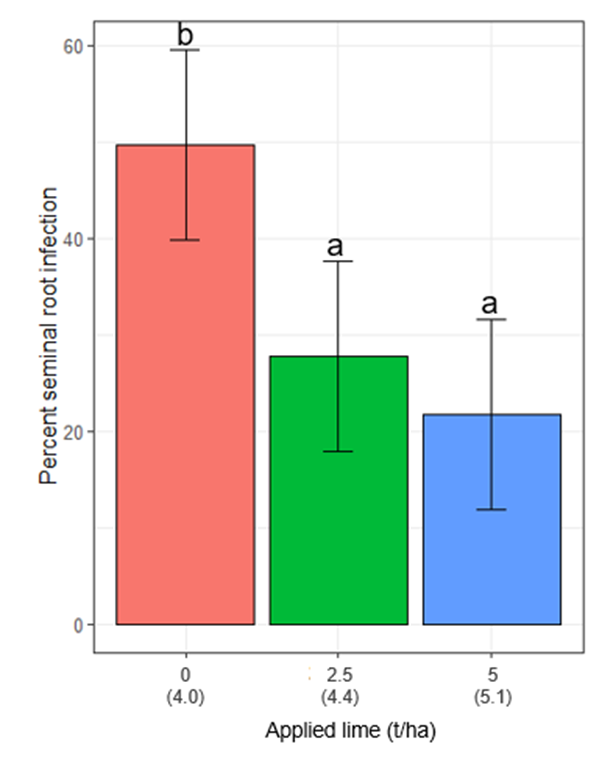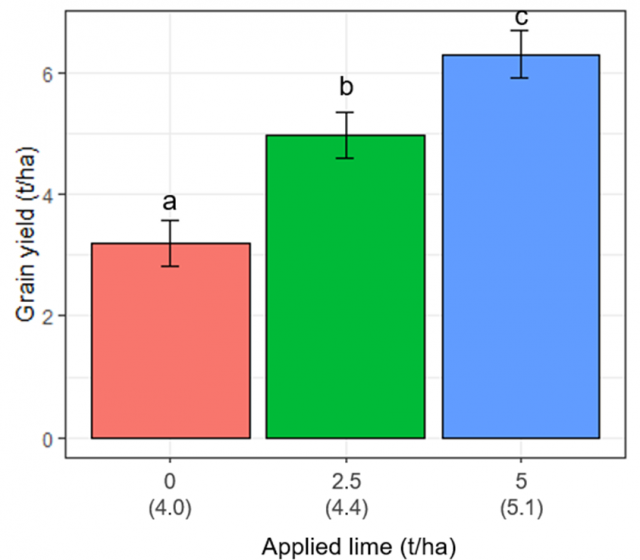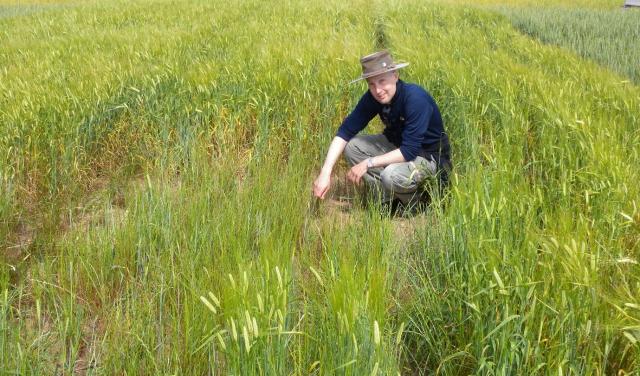The effect of liming on Rhizoctonia root rot
In WA it has been observed that there is an increase in rhizoctonis root rot disease (caused by Rhizoctonia solani AG8) in trials with +/- lime treatments. Some farmers have also noted that there were more R. solani issues in limed paddocks.
DPIRD’s Daniel Huberli has been involved in a national project exploring the impact of lime application on rhizoctonia root rot.
At a glance
- Lime reduced the R. solani infection of seminal barley roots by 22% and 28% for the 2.5 and 5.0 t/ha applied lime treatments.
- The large beneficial impact of lime application on reducing disease was reflected in a corresponding increase in grain yield. Barley yielded an additional 3.1 t/ha when 5.0 t/ha lime had been applied.
In 2020, an experiment on the interaction between rhizoctonia root rot (R. solani) and lime were established in Wongan Hills, WA.
The experiment was situated on areas where known quantities of lime had been applied in 2012. A Spartacus barley crop was sown over the site and R. solani inoculated over the area.
The average pH levels at the 0-10 cm depth of soils collected in June 2020 were 4.0, 4.4 and 5.1 for the 0, 2.5 and 5.0 t/ha lime applied in 2012, respectively. As there was good differentiation between the lime applied in 2012 and the pH levels in the soil in 2020, the area was oversown with Spartacus barley and half of the plots were inoculated with R. solani to determine the effect of lime on disease incidence and severity.
Both lime and R. solani inoculum had a real effect (p<0.05) on seminal root infection. Lime reduced the R. solani infection of seminal roots by 22% and 28% for the 2.5 and 5.0 t/ha applied lime (Figure 2), respectively, while R. solani increased the infection by 12% when compared to the untreated control. For the uninoculated plots seminal root infection was 27% which was higher than expected as the start of the season had a low level of R. solani detected at the site.
The season may have increased the R. solani inoculum substantially or some other soilborne pathogen such as Pythium (also detected at the site at the beginning of the season) contributed to higher symptomatic seminal roots. Lime had no effect on the proportion of crown root infection. Applying R. solani inoculum significantly (p<0.001) increased the proportion of crown roots infected by 35% when compared to the uninoculated plots.

The large impact of lime on disease was also reflected in the large significant (p<0.001) increase in grain yield of 3.1 t/ha in the 5.0 t/ha lime treatment (Figure 3). As expected, both lime treatments had a significant impact on grain quality. Screenings were reduced by more than 8.7%, test weight was increased by over 1.1 kg/L, and 1000 seed weight was increased by over 2.4 g when both lime treatments were compared to the untreated. R. solani did not have a significant effect (p>0.05) on grain quality.

In WA, observations that liming increases rhizoctonia root rot in growers' paddocks instigated this single trial in 2020. The changes in pH as a result of liming showed that seminal root infection by R. solani was significantly reduced when the two treatments were compared to the nil lime treatment, but disease in crown roots was not affected by lime. The large benefit of the lime treatments was the significant grain yield increase of over 3 t/ha in the 5.0 t/ha lime treatment, which is more than double the unlimed nil treatment.
Observations of increased disease from liming appear to be on early limed paddocks, which may explain the differences in the trial findings which were on a site with equilibrated pH levels from liming treatments applied in 2012. Future trials should investigate early liming in conjunction with nutrition to determine whether the interaction predisposes crops to soilborne diseases.

